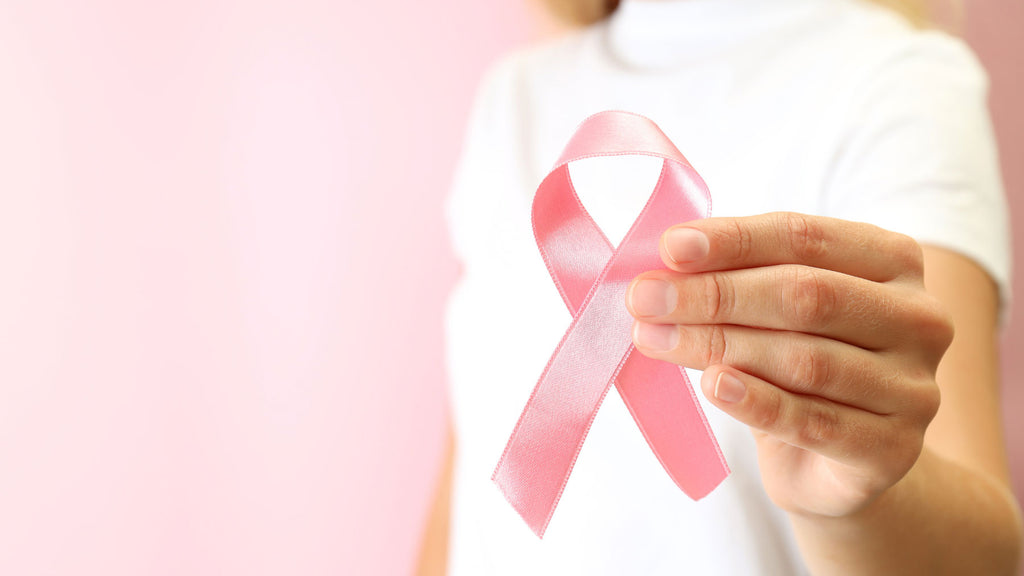Pink Power: A Guide to Breast Cancer Awareness Month
October is here, and it's not just about autumn leaves and pumpkin spice lattes. It's Breast Cancer Awareness Month, a time to join forces in supporting those affected by breast cancer. At Visual Mood, we celebrate the strength and style of women, and that extends to raising awareness about this critical issue. In this blog post, we'll dive into breast cancer awareness facts, the history of this meaningful month, the significance of the color pink, and provide valuable insights into breast cancer prevention and self-exams. Let's unite in knowledge and support during this vital month, making a positive impact together.

Breast Cancer Awareness Facts
Breast cancer, an adversary that touches countless lives, underscores the vital need for awareness. The statistics are both sobering and motivating. Did you know that breast cancer is the most common cancer among women worldwide? In 2020, approximately 2.3 million new cases were diagnosed, with over 685,000 women losing their lives to this disease. And it's not just women; men can be affected too, albeit less frequently.*
These figures may seem daunting, but here's the silver lining: breast cancer awareness has saved lives. With earlier detection and improved treatment options, the survival rates have been steadily increasing. By understanding the risks, being vigilant, and promoting regular screenings, we can catch breast cancer at an earlier, more treatable stage. As we dive into Breast Cancer Awareness Month, let's remember that knowledge is our strongest weapon. Together, we can make a difference in the fight against breast cancer.
The History of Breast Cancer Awareness Month
Breast Cancer Awareness Month, a beacon of hope and change, has a rich and transformative history. It all began in the early 1980s when a collaboration between a pharmaceutical company, AstraZeneca, and the Cancer Society of America laid the foundation for this impactful initiative. Their aim was simple but profound: to promote breast cancer awareness, educate the public about early detection, and raise funds for research.
In 1985, what was initially a single-day event soon expanded into a weeklong observance, and by 1993, it blossomed into the entire month of October. Over the years, Breast Cancer Awareness Month has evolved into a global movement, marked by pink ribbons, illuminated landmarks, and heartwarming stories of survivors. The campaign has played a pivotal role in destigmatizing breast cancer and emphasizing the importance of early screening and research.
Now, every October, individuals, communities, and organizations worldwide unite in solidarity, underscoring the significance of breast cancer awareness.
The Significance of the Color Pink

Pink, the hue of compassion and courage, has become the iconic color of Breast Cancer Awareness Month. Its choice is deeply symbolic. Pink represents femininity, nurturing, and hope. In the early '90s, the pink ribbon, a global symbol of breast cancer awareness, emerged.
This color has transcended mere aesthetics; it has become a powerful beacon of hope and unity. It unites survivors, supporters, and healthcare professionals in a common cause. Pink ribbons adorn everything from clothing to products, serving as a reminder to get screened, support research, and show solidarity. In this sea of pink, we find strength and a shared determination to defeat breast cancer.
Breast Cancer Prevention and how to perform a breast self-exam
Prevention is a cornerstone in the fight against breast cancer, and knowledge is your best ally. One of the most accessible ways to actively participate in your health is by performing regular breast self-exams. Here's a simple guide on how to do it, and we'll also include an infographic for a quick reference:
- Choose a Convenient Time: Select a time when your breasts are least likely to be tender or swollen, ideally a few days after your menstrual cycle.
- Stand in Front of a Mirror: Inspect your breasts with your arms at your sides. Note any changes in size, shape, or skin texture. Look for any visible lumps, dimpling, or nipple changes.
- Raise Your Arms: Raise your arms and check for the same changes as step 2.
- Examine Your Breasts Lying Down: Lie on your back with a pillow under your right shoulder and your right arm behind your head. Use your left hand to check your right breast. Move your fingers in small, circular motions, covering the entire breast and armpit area.
- Check Your Nipples: Gently squeeze each nipple to check for any discharge or changes in shape.
- Repeat on the Other Side: Perform the same steps on your left breast.
- Stand Up Again: Finally, stand up and repeat the visual inspection with your arms at your sides.

Remember, self-exams are not a substitute for regular clinical breast exams and mammograms, but they are an essential part of early detection. If you ever notice any changes or have concerns, consult a healthcare professional promptly.
During Breast Cancer Awareness Month, we unite in knowledge, wear the symbol of hope in pink, and commit to prevention through self-exams. Together, we can make a difference in the fight against breast cancer.
*https://www.who.int/news-room/fact-sheets/detail/breast-cancer




